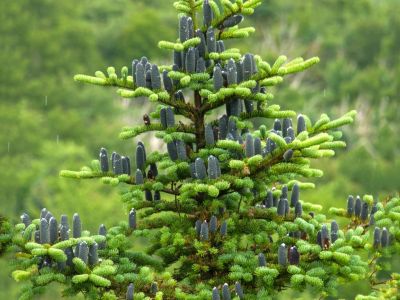Balsam Fir Tree Info
Balsam firs look very similar to spruce trees. You can tell the difference by the way the cones grow. Balsam fir cones stand straight up on the branches, while spruce cones dangle. You will never see a balsam fir cone on the ground because the cones break up into small pieces when they ripen. Balsam trees are commercially significant because of their use as Christmas trees. Historically, the trees were important for their resin, which was used to treat lung ailments. The resin was also used to seal birchbark canoe seams and as a varnish for watercolor paintings.
When to Plant Balsam Fir
Plant balled, burlaped, or bare root balsam fir trees in fall or spring. Fall is usually the best time to plant. Rehydrate bare root trees by soaking them in a bucket of water for several hours before planting. You can plant container-grown plants any time of year. Avoid planting during periods of drought or extreme heat. If you are planting a tree that was used indoors as a Christmas tree, plant it outdoors as soon as possible. Choose a sunny or lightly shaded location for your tree. An area with light morning shade will help prevent frost damage. Water deeply and mulch heavily immediately after planting using 2 to 3 inches (5 to 7.5 cm.) of organic mulch.
Balsam Fir Tree Care
While the tree is young, water it weekly in the absence of rain. Young trees need a lot of water, so use a soaker hose to saturate the soil around the tree, or bury a water hose under the mulch and let it run as slowly as possible for about an hour. If the water starts to run off before the hour is up, turn it off for a while and let the soil absorb the water, then turn the hose on later to finish out the hour. Older trees that have roots sunk deep into the soil only need watering during prolonged dry spells. Fertilize balsam fir trees in spring. Use a complete, balanced fertilizer and follow the manufacturer’s instructions. Over-fertilizing can seriously damage the tree, so be careful not to overdo it. Once a tree matures, it doesn’t need fertilizer every year.
